Phytogenics can positively impact innate immunity factors
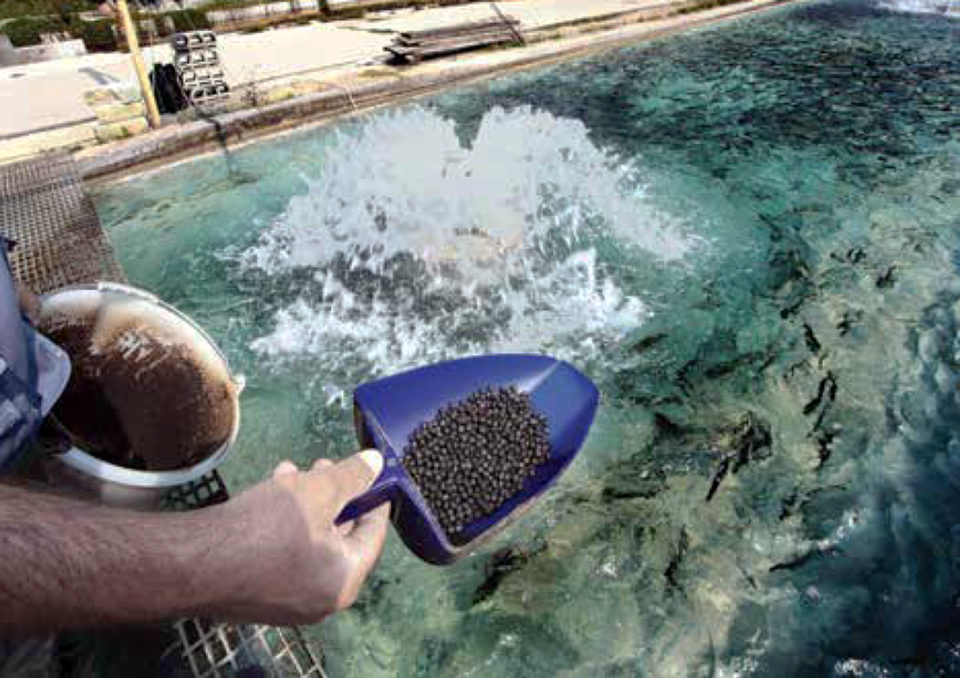
Phytogenics improve feed digestibility, especially for proteins and amino acids. Fish given diets containing phytogenics exhibited improved growth and feed conversion.In recent years, high raw material prices and rising consumer awareness of food safety have forced aquaculture producers to pursue solutions for improving production performance through sustainable aquaculture practices. Recently, phytogenic feed additives have gained considerable attention as an answer to those challenges.
Phytogenics include a wide variety of herbs, spices and derived products, such as essential oils. These phytogenic active compounds can be applied through different strategies to improve feed efficiency, growth performance and disease resistance. Phytogenic feed additives also decrease ammonia dischages through improved protein utilization, hence decreasing the loss of nitrogen to nature.
Improving feed efficiency
The replacement of fishmeal by plant protein in aquafeed in an attempt to reduce feed costs and dependency on fishmeal can negatively affect feed efficiency. Plant raw materials are less digestible and can cause negative effects on the gastrointestinal tracts of culture animals.
The presence of undigested nitrogenous compounds in the intestine favors the formation of ammonia and biogenic amines by the intestinal microbiota. These compounds are toxic and consequently lead to an imbalance of the intestinal microbiota. The resulting inflammatory processes and accelerated turnover of the intestinal tissue can lead to poor performance.
Phytogenics may stimulate the digestive secretions, increase villi length and density, and raise mucous production through an increase in the number of globlet cells. Through processes such as matrix encapsulation, volatile essential oils can be stabilized and remain active throughout a greater section of the gastrointestinal tract. As a result, phytogenics improve feed digestibility, especially for proteins and amino acids.
Fish, shrimp trials
These effects were well illustrated in a trial made with gilthead sea bream (Sparus aurata) at the University of Algarve. In this trial, fish were fed a diet with 14 percent fishmeal supplemented with non-encapsulated or matrix-encapsulated phytogenics in order to observe their efficacy on feed efficiency, body composition and nutrient retention.
Dietary supplementation with the encapsulated product showed the better results, with a significant reduction of feed-conversion ratio (FCR) from 1.28 to 1.12 (Fig. 1), a weight gain from 3.17 to 3.40 grams, and specific growth rate from 1.76 to 1.82 percent per day. The non-encapsulated phytogenic additive also showed a significant reduction of FCR values from 1.28 to 1.17 at day 63.
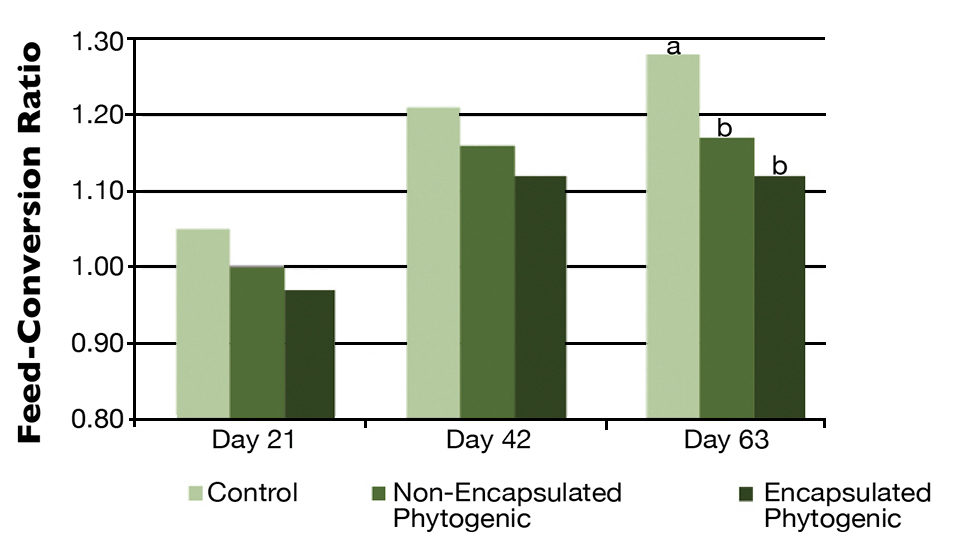
Inclusion of the phytogenic products in the diets significantly (P < 0.05) enhanced protein and fat retention. The results also showed that a significant reduction of total nitrogenous losses, which was clearly associated with lower metabolic losses.
In another trial, the matrix-encapsulated phytogenic feed additive was tested on white shrimp (Litopenaeus vannamei) at the Pearl River Aquaculture Institute in China. In this trial, the supplementation of shrimp diets with the product resulted in 4 percent greater body length, a 14 percent gain in shrimp weight and an 11 percent improvement in feed conversion (Fig. 2).
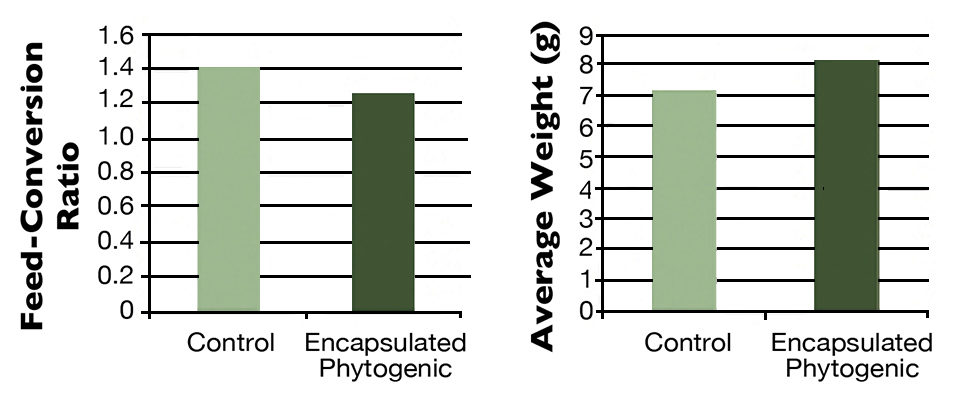
Natural growth promotion
Phytogenics can improve the palatability of diets and stimulate the appetite of culture animals, which increases feed consumption and growth performance. Phytogenics can act as natural growth promoters, inducing the transcription rate (increasing the RNA) that leads to an increase in available amino acids and therefore increasing the production of proteins in the cells.
A good example of phytogenics influencing growth performance was seen in a study carried out with channel catfish, Ictalurus punctatus, at the National Warm Water Aquaculture Center in the United States. Fish fed diets with matrix-encapsulated phytogenics had weight gain enhanced from 85.8 to 109.3 grams (Fig. 3), and their FCR was reduced from 1.50 for a control to 1.36. Furthermore, whereas fish in the control group reduced feed intake during days with large variations of water temperature, fish that received feed with the additive maintained feed intake on an adequate level.
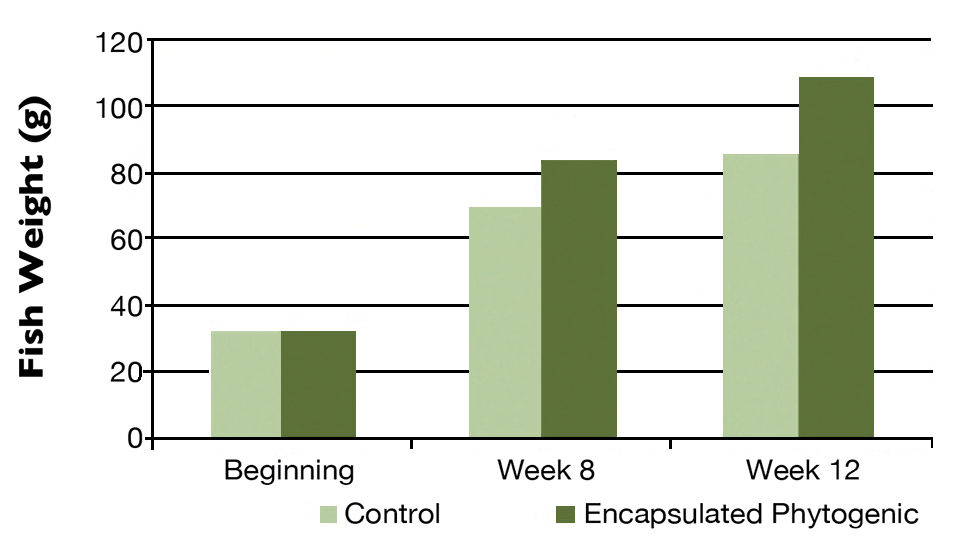
Fillet quality
Another prospective area for the use of phytogenics in aquaculture is improvement of the antioxidative status of fish fillets. Fish, more than ever, is much appreciated because of its high levels of unsaturated fatty acids. However, those can be easily oxidized.
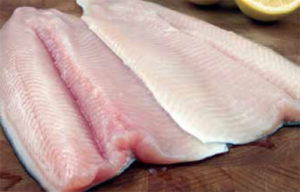
Antioxidants are an important factor for limiting oxidation in fish meat after slaughtering. Lipid oxidation can cause pale coloration, low water-holding capacity and reduction in nutritional quality in meat. Due to their ability to scavenge free radicals by single-electron transfer, phytogenic products are excellent feed additives to improve the fillet quality in fish.
This fact was confirmed in a trial with rainbow trout (Oncorhynchus mykiss) carried out at a commercial trout farm in Karditsa, Thessaly, Greece. Malondialdehyde (MDA) was chosen as an indicator of oxidation stability. Furthermore, glutathione-S-transferase (GST) was used as an indicator of the auto-oxidation process.
The levels of glutathione peroxidase and MDA were evaluated on the day of slaughtering and after five days of refrigerated storage. The consumption of feed containing matrix-encapsulated phytogenics appeared to significantly (P < 0.05) decrease MDA formation in the trout fillets. In addition, glutathione-S-transferase activity was significantly (P < 0.05) higher in fillets from fish fed the phytogenic feed additive (Table 1).
Gonçalves, experimental diets, Table 1
| Treatment | Malondialdehyde (nmol/mg protein) | Malondialdehyde (nmol/mg protein) | Glutathione S-transferase (mmol/min/mg protein) | Glutathione S-transferase (mmol/min/mg protein) |
|---|---|---|---|---|
| Control | Storage Day 0 | Storage Day 5 | Storage Day 0 | Storage Day 5 |
| Matrix-encapsulated | 34.1 | 49.1a | 2.12a | 1.28a |
| phytogenics | 30.2 | 32.3b | 2.84b | 2.39b |
Table 1. Effects of experimental diets on the antioxidative status of trout fillets after refrigerated storage.
Tool for preventive health
It is well documented that phytogenics can positively affect innate immunity factors such as nitric oxide and total complement, which are important indices for showing the ability of the host defense immune mechanisms to manage infections.
The antimicrobial principles of phytogenics can act in several ways. They may lyse the bacterial cell wall, block protein and DNA synthesis, or inhibit the enzyme secretions and interfere with the signaling mechanism of quorum-sensing pathways. Pathogenic microorganisms have a major impact on commercial shrimp production. Any measures that support shrimp resistance to pathogenic challenges are urgently required.
In a trial carried out at Pearl River Aquaculture Institute, the effects of matrix-encapsulated phytogenics on disease resistance in white shrimp was evaluated. After a period of 56 days, during which shrimp received feed supplemented with the phytogenics, the shrimp were injected with 0.2 mL of pathogenic Vibrio parahaemolyticus at a concentration of 5 x 107/mL. The Vibrio is known to cause early mortality syndrome in shrimp.
Shrimp that received the phytogenic additive had increased resistance against Vibrio parahaemolyticus in comparison with the control (Fig. 4). The mortality of shrimp fed the matrix-encapsulated phytogenic feed additive remained around 20 percent, while mortality rapidly increased in the control group.
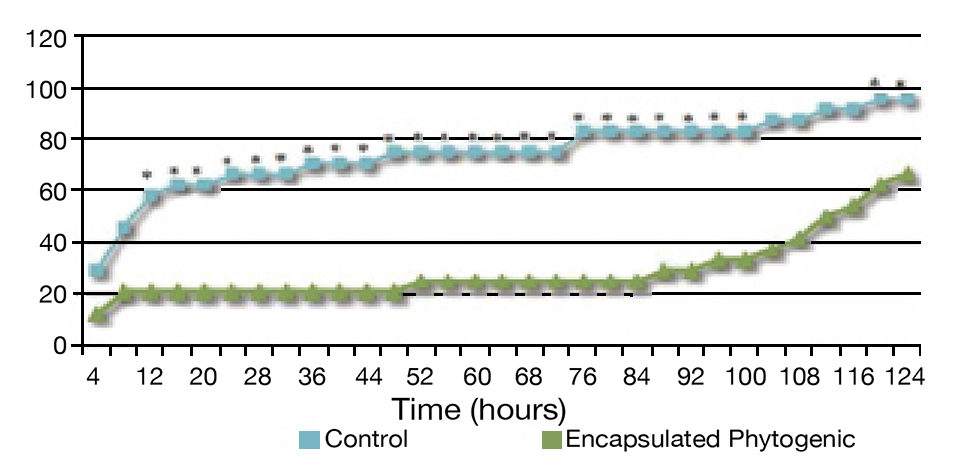
(Editor’s Note: This article was originally published in the January/February 2015 print edition of the Global Aquaculture Advocate.)
Authors
-
Rui Gonçalves
Technical Manager – Aquaculture
Biomin Holding GmbH
Industriestrasse 2
3130 Herzogenburg, Austria[116,101,110,46,110,105,109,111,105,98,64,115,101,118,108,97,99,110,111,103,46,105,117,114]
-
Gonçalo Santos
Research and Development Manager – Aquaculture
Biomin Holding GmbH
Industriestrasse 2
3130 Herzogenburg, Austria
Tagged With
Related Posts

Health & Welfare
Aiding gut health with a natural growth promotor
A study with Nile tilapia conducted in commercial production cages in Brazil showed the potential – in the absence of major disease threats – of a commercial, natural growth promotor that modulates the microbiota (inhibiting growth of pathogenic bacteria and promoting growth of beneficial bacteria) and inhibits quorum sensing.

Health & Welfare
Dietary organic acids used as growth promoters, anti-microbials
A feeding trial measured growth, nutrient utilization and faecal/gut bacterial counts in triplicate groups of red hybrid tilapia (Oreochromis sp.). Study results show that dietary organic acids can potentially replace OTC as a growth promoter and anti-microbial in tilapia feeds.

Aquafeeds
Natural feed additive improves shrimp productivity
The digestive systems of shrimp are main entry points for bacterial and viral pathogens, and unfavorable microflora. Natural feed additives that combine different actions have proven effective in improving survival where shrimp are exposed to bacterial pathogens.

Health & Welfare
Organic acids in aquafeeds: A potential substitute for antibiotics
Prophylactic use of antibiotics in animal production is being banned or restricted by many countries. A potential substitute for antibiotic growth promoters in aquafeeds is organic acids, which are the focus of much research and commercial interest.


